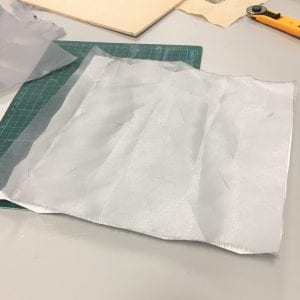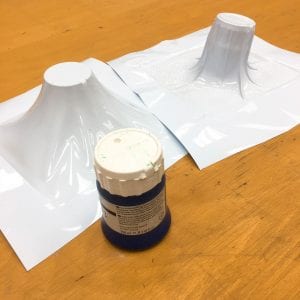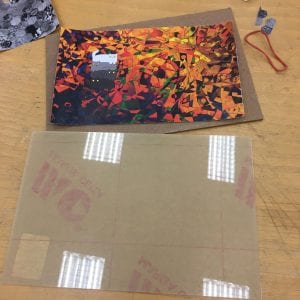What is the technique?
- Fabric of thread
Using a sewing machine to create design with thread, yarns and other fabric on a water soluble stabilizer.
- Plastic fusing
When layered, heated, and pressurized, plastic bags will melt or fuse to each other or themselves creating a new type of durable, sewable fabric.
What are the relevant materials needed for the technique?
Fabric of thread:
- Sewing Machine
- Water soluble stabilizer
- Threads, yarns, fabrics, strips, trimmings etc.
- UV-resistant clear acrylic spray
- Optional: object to form shape over
Plastic fusing:
- Plastic bags
- Iron
- Baking papers
- Scissors
How to achieve technique?
Fabric of thread:
Layout threads and yarns on water soluble stabilizer and stich across using a sewing machine; wash the piece in warm water; for wearable pieces, wash thoroughly to remove all gluey membrane; for pieces that are to be moulded, place it on the moulding object once the stabilizer dissolves and leave it to dry; Spray the dry piece with acrylic spray to harden it.
Plastic fusing:
Cut the plastic bags to create designs; place a sheet of baking paper at the bottom and then put the plastics strips on top; lay down another layer of baking paper and iron over it
What are the uses and applications of the technique?
Fabric of threading can be used for a wide range of applications from formal dining table to eveningwear. It can also create interesting shape depending on the moulding objects. For example, it can be made into light shade.
Plastic fusing allows us to create a new type of ‘fabric’ for all kinds of projects; the end results can have different colours, patterns and thickness as we make them.
Experiment
Lay down threads on water soluble material to create a design
I tied two strings with three different colours to form a circle and then put down some threads matching the colour theme. And then I put another layer of water soluble material and pinned down the design. The piece shrank when I tried to stich down but it turned out quite nicely. I moulded it over a square box.
Plastic fusing testing during lesson
Trying out different colors and mixing different types of plastic, I realized the shrinkage was very obvious. Some thin clear plastic actually melted and became scrappy.
I learnt from YouTube videos to cut, tied and make plastic yarn (plarn) and pressed it with an iron to make it more sturdy.
I also experimented with fusing different colours of plastic bags and tried to merge them together. It was quite difficult to merge if I did each colour one by one first as they would already shrink and harden. I did manage to join the pieces and turned it into a tube. However, it broke when I tried to cut and made some design.
Plastic fusing with fallen leaves
Picking up some leaves and flower on a rainy day, I decided to test something new by ‘encapsulating’ them in clear plastic sheets. Even though I put more than one sheet of plastic, the end result still had holes everywhere. I trimmed the edges to following the shape and waited to see the colour change in a few days. It didn’t encapsulate as I anticipated but it kind of resembled a frosty leave which was also interesting.
Personal Reflection
I think fabric of threads was a more organized method since the stiches added onto the design is quite uniform. It can be used to create very intricate patterns with colour variations. Personally I think plastic fusing has a wider range of application and more potential for exploration so that is something I will try in the future.





































































































